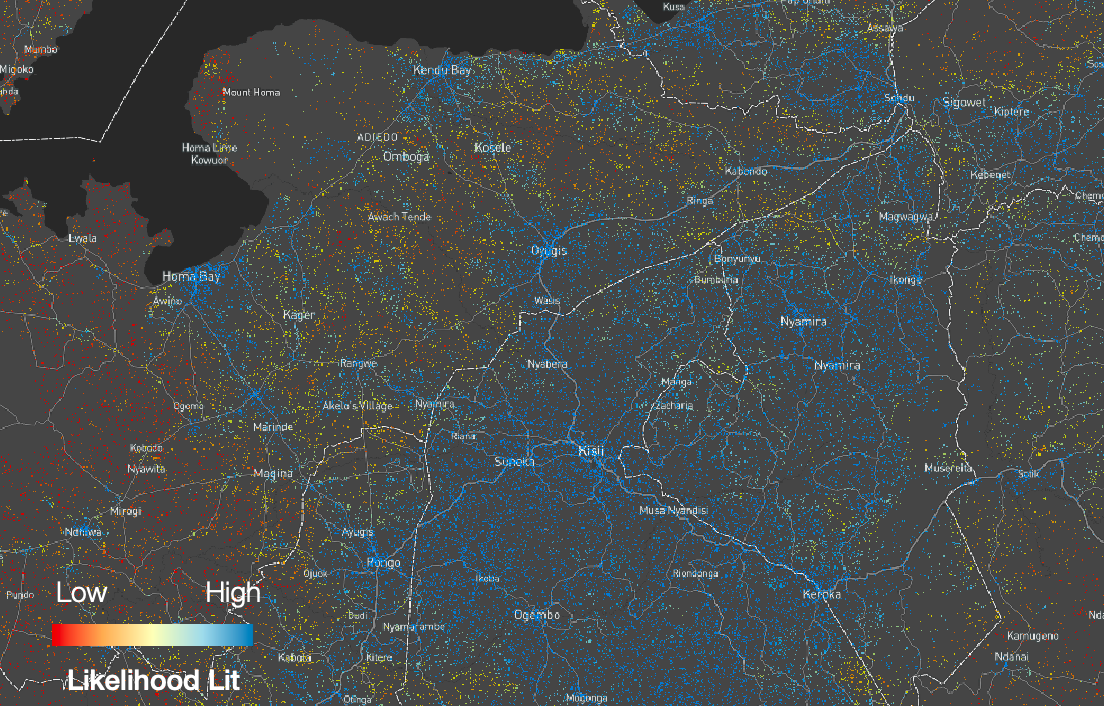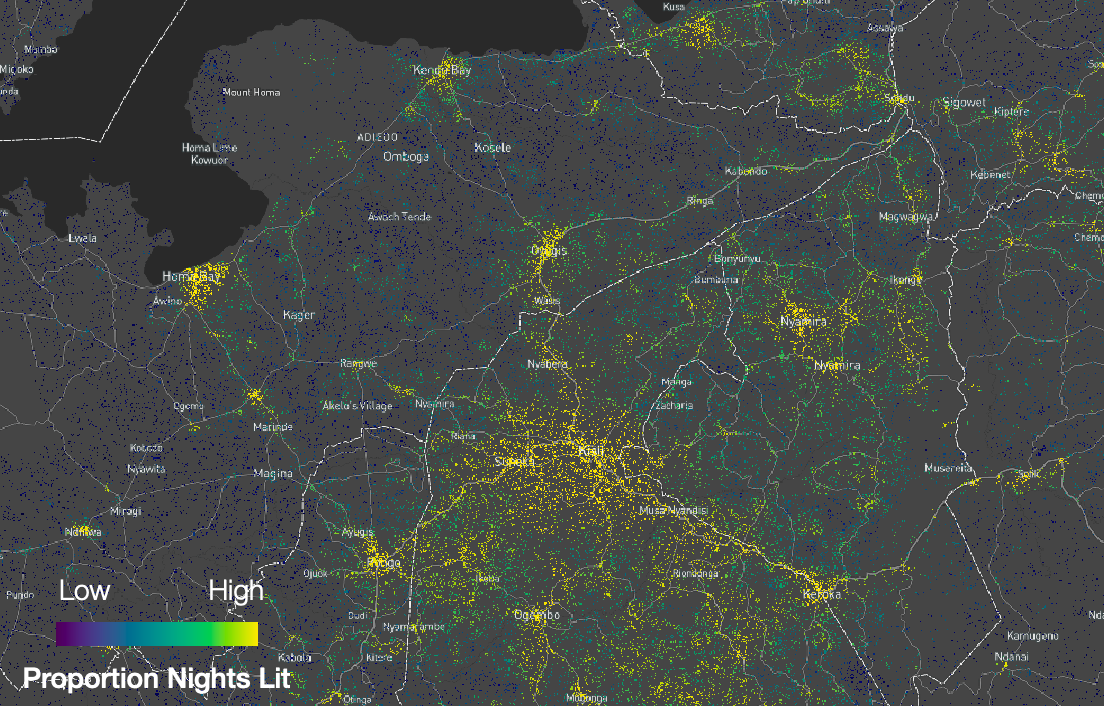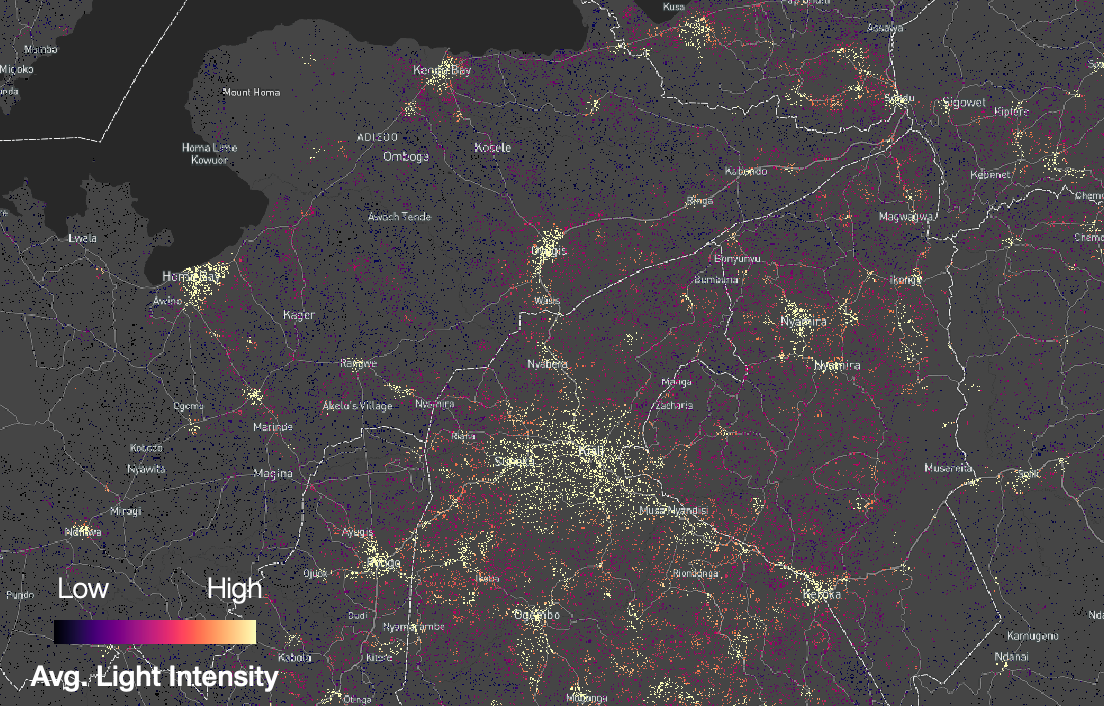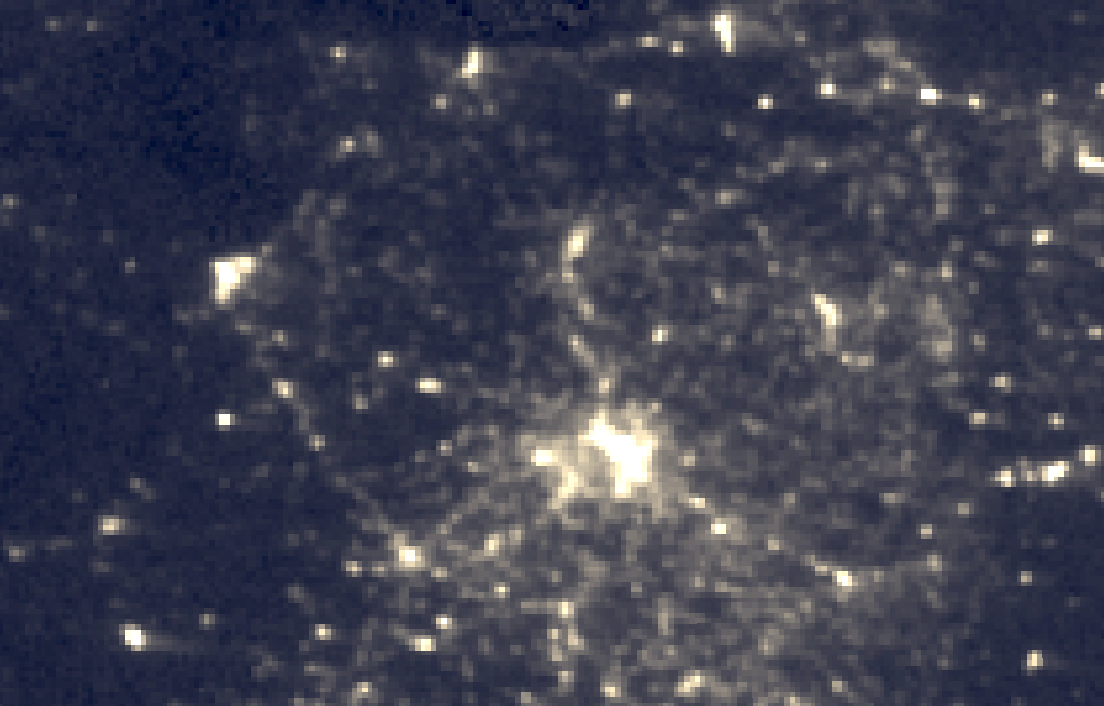Computational estimates of electricity access, power supply reliability, and energy usage at the settlement-level across the developing world.
NEWLY PUBLISHED
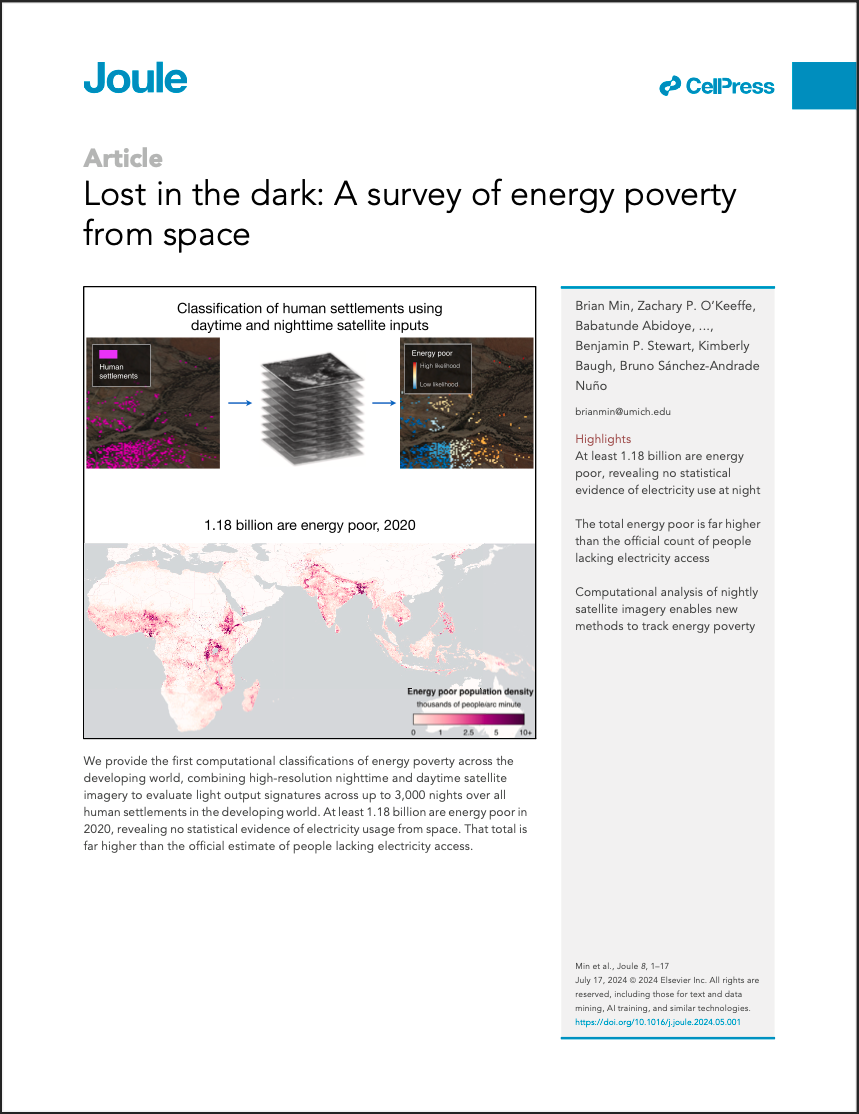 “Lost in the Dark: A Survey of Energy Poverty from Space,”
“Lost in the Dark: A Survey of Energy Poverty from Space,”
Brian Min, Zachary P. O'Keeffe, Babatunde Abidoye, Kwawu Mensan Gaba, Trevor Monroe, Benjamin P. Stewart, Kim Baugh, Bruno Sánchez-Andrade Nuño
Joule (2024), https://doi.org/10.1016/j.joule.2024.05.001.
For additional details and analyses, see the supplemental information.
We provide the first computational classifications of energy poverty across the developing world, combining high-resolution nighttime and daytime satellite imagery to evaluate light output signatures across up to 3,000 nights over all human settlements in the developing world. At least 1.18 billion are energy poor, revealing no statistical evidence of electricity usage from space. That total is far higher than the official number of people lacking electricity access. In a new analysis of settlement-level data across Sub-Saharan Africa, most of the variation in energy poverty rates is explained by within-country differences in population density, remoteness, and land terrain characteristics. However, many neighborhoods and villages lie near areas where electrical networks are already established, indicating that there are opportunities to reduce energy poverty without substantial new infrastructure investments.
For inquiries and requests related to the paper, please contact Brian Min.
Press and media: Nature, World Bank blog, UNDP blog, Institute for Social Research (University of Michigan).
Nearly 1 billion people still lack access to electricity. Another 3.5 billion people are connected to power that is unreliable or of poor quality. Yet data on electricity access and reliability remains coarse and incomplete. In collaboration with the World Bank and the National Oceanic and Atmospheric Administration (NOAA), we generate new High Resolution Electricity Access (HREA) estimates that identify the likelihood that a human settlement is electrified by monitoring and comparing time series data on nighttime light output across thousands of nights across the globe. This likelihood-based classification approach enables us to robustly estimate the proportion of the world living in electrified areas and the reliability of electricity supply over time. By leveraging advances in computational power, statistical algorithms, and new data from POPGRID and other sources on the location of human settlements, these high resolution data provide new tools to track progress towards reliable and sustainable energy access across the world.

